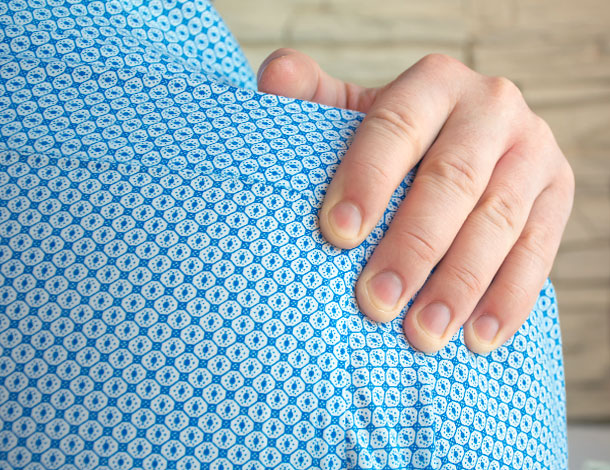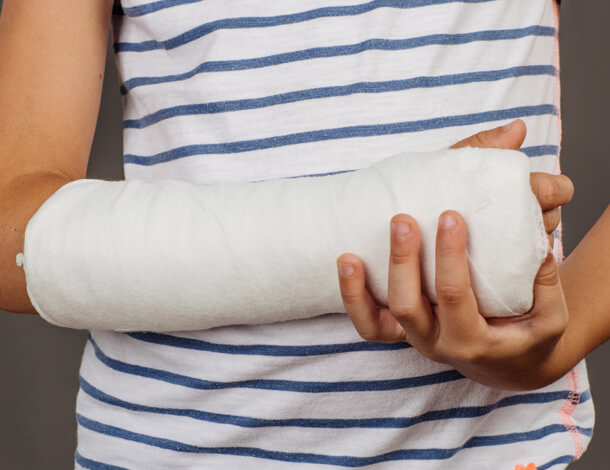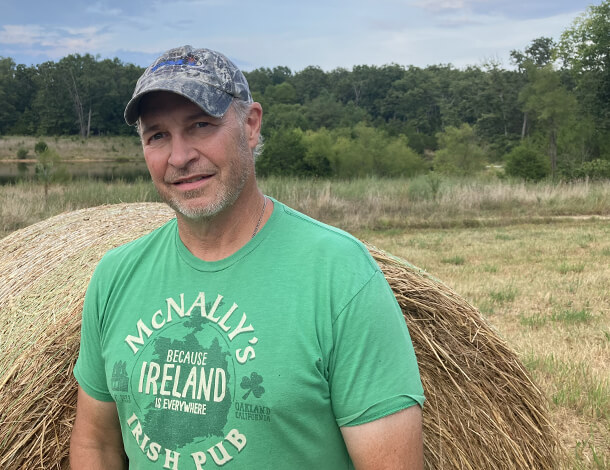Experiencing Pain When Moving Your Dominant Arm? It Could Be a Rotator Cuff Tear

Shoulder pain and weakness from a rotator cuff tear can make it hard to do even simple everyday tasks, like putting on a seatbelt or brushing your hair.
Rotator cuff injuries are incredibly common, with nearly two million people seeking treatment every year, according to the American Academy of Orthopaedic Surgeons. Fortunately, these injuries are often preventable, and effective treatments are available when they occur.
Keep reading to learn about the causes and symptoms of a rotator cuff tear, how this type of injury is diagnosed and treated, and what to expect if you need rotator cuff repair surgery.
What Is a Rotator Cuff Tear?
The shoulder joint is made up of a ball and socket surrounded by muscles and tendons called the rotator cuff. The rotator cuff tendons can tear during a sudden impact, like a hard fall, or tear gradually over time due to wear and tear on the shoulder.
Types of Rotator Cuff Tears
Rotator cuff tears usually occur where the tendons attach to the bone. A tear is most likely to happen in your dominant arm (the one you use most), and your chances of injury increase with age.
People who play throwing sports like baseball or have a job that requires repeated overhead motions (such as painters or carpenters) are also at higher risk of a tear.
There are two main types of rotator cuff tears:
- Partial Tear
- Full-Thickness Tear
What Is a Partial Rotator Cuff Tear?
When a partial tear occurs, the tendon may tear slightly or become thinned but doesn’t completely detach from the bone. This is commonly due to overuse or wear and tear over time.
As the tendon frays and becomes weaker, the chances of a complete tear increase.
What Is a Full-Thickness Tear of the Rotator Cuff?
When a full-thickness or “complete” tear occurs, part of the tendon completely detaches from the bone.
This kind of tear can happen after a hard fall or when lifting something heavy. A full-thickness tear may benefit from surgery and is worth discussing with a surgeon.
What Is a Massive Tear of the Rotator Cuff?
A massive rotator cuff tear involves a full-thickness tear to multiple tendons of the rotator cuff. When injured, they are typically repaired urgently as repairs can become more complicated, sometimes impossible if too much time goes by, as the muscle can atrophy over time.
Rotator Cuff Tear Symptoms
The severity of rotator cuff tear symptoms varies based on the type of tear but most commonly include:
- Pain at night, especially when lying on the shoulder
- Pain when lifting and lowering the arm
- Weakness when rotating your arm or lifting it overhead
- A cracking or grinding sensation when moving the shoulder
- Intense shoulder pain after an accident or fall
- A snapping sensation and immediate weakness in the shoulder
Think you might have a rotator cuff tear? Take the shoulder pain assessment
What Does a Torn Rotator Cuff Feel Like?
It’s easy for patients trying to figure out their shoulder pain’s cause to get confused because rotator cuff tear symptoms might seem similar to several other shoulder conditions and injuries, including:
- Bursitis
- Tendinitis
- Frozen Shoulder
- Torn Labrum
- Shoulder Impingement Syndrome
- AC Joint Arthritis
- Nerve Injuries (e.g., Brachial Plexus Injuries)
- Muscle Strains
That’s why getting a proper diagnosis from an experienced doctor for shoulder pain is so critical since treatments can differ for torn rotator cuffs.
How Is a Torn Rotator Cuff Treated?
Care options for shoulder rotator tears include various non-surgical methods and, for some patients, surgical procedures tailored to their unique needs.
Have you scheduled a first appointment with a shoulder pain doctor? Here’s what to expect
Nonsurgical Treatments for Rotator Cuff Lacerations
Shoulder specialists may recommend non-operative therapeutic options for partial tears (or small complete tears. In about 80 to 85% of patients, conservative care can relieve pain and improve shoulder function.
Examples of non-invasive treatments that your shoulder doctor may suggest for this type of rotator cuff tendon tear include:
- Rest
- Activity modification
- Occupational therapy
- Pain medications or steroid injections
Because rotator cuff tears tend to get worse over time and can’t heal on their own, your shoulder specialist may recommend surgical repair, especially if you have a large or complete tear, ongoing symptoms, or significant weakness.
Rotator Cuff Surgery
To alleviate pain and improve arm and shoulder function, some patients require rotator cuff repair surgery to heal.
What Happens During Surgery for a Torn Rotator Cuff?
A rotator cuff repair procedure can be done arthroscopically in a minimally invasive fashion with the assistance of an arthroscope. This means your shoulder surgeon will make a small incision and insert a tiny camera called an arthroscope.
They will then insert small tools to repair the torn tendon by reattaching it to the bone. If the tendon is too damaged to be reattached, they may use a nearby tendon as a replacement (tendon transfer). Repairs may benefit from a small incision being made to perform your repair through an arthroscope-assisted mini-open approach, which is also a minimally invasive technique.
What Is Recovery From Rotator Cuff Tear Surgery Like?
After surgery, you will likely need to wear a sling for a few weeks or months as your shoulder heals, followed by therapy to strengthen the tendon.
Your rotator cuff pain may subside within four to eight months, though it can take up to a year to regain your full strength and range of motion.
Shoulder Care You Can Trust
If shoulder pain is keeping you from enjoying life to the fullest, we can help.
Indiana Hand to Shoulder Center’s world-renowned surgeons, advanced practice providers, and therapists have treated shoulder injuries for over 50 years.
We will take a collaborative approach to your care and create the best treatment plan to restore your range of motion and get optimal shoulder pain relief.
You Might Also Like:



